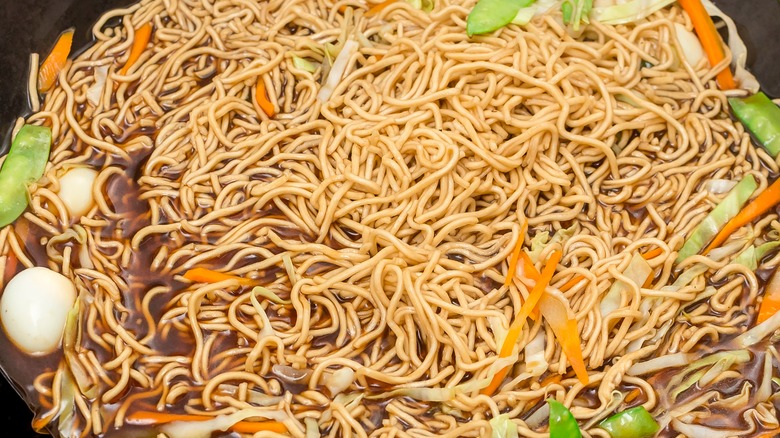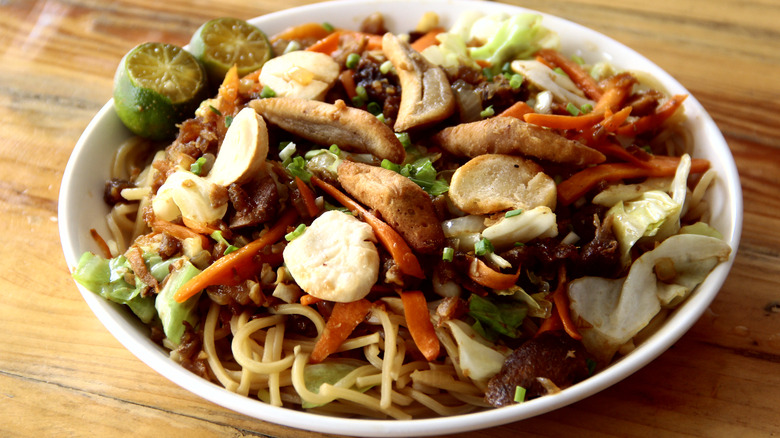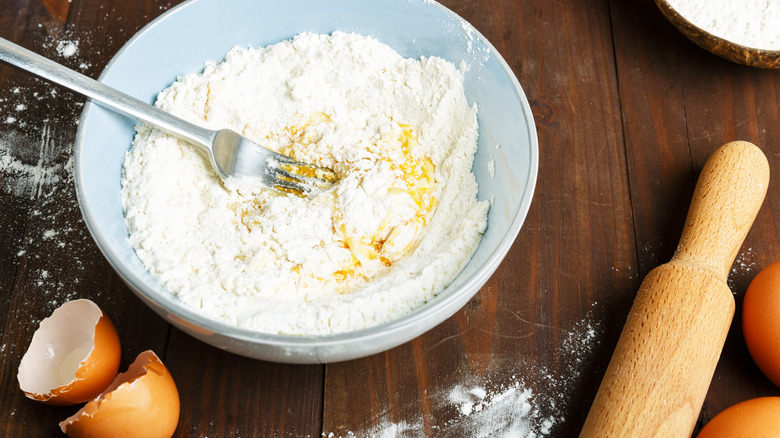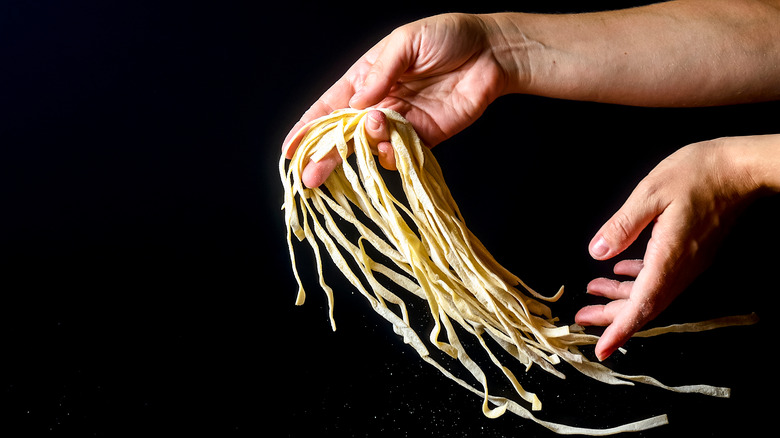The Only Ingredients You Need To Make Fresh Miki Noodles
Reminiscing about that comforting bowl of miki noodles that a lovely Filipino tita made for you, you're thrilled to learn you, too, can create fresh miki noodles right at home, with a sharp knife, a rolling pin, and ingredients likely already in your pantry: flour, salt, a couple of eggs, some vegetable oil, and food-grade lye water.
While crafting fresh egg noodles from scratch might seem daunting at first, especially if you don't have lye water or had never worked with it before, fret not. Firstly, you can make a lye water substitute by simply adding baking soda to warm water. The dough will then come together nicely, even for noodle novices, and you'll be enjoying fresh egg noodles in no time — whether as a hearty noodle soup or a flavorful pancit stir-fry.
Regardless of how you cook them, miki noodles, while humble, will shine. You'll probably want to make this Filipino staple again and again and will see why they provide a comforting link to home for Filipinos around the globe.
The origins and popularity of humble miki noodles
While miki noodles originated in the northern Philippines, they are likely inspired by Chinese noodles. This influence traces back to early Chinese traders and migrants. The term 'miki' itself stems from the Chinese word 'mi', meaning noodles, and 'mie ki', a Hokkien phrase for flat noodles.
In the Philippines, miki noodles are made at home, in eateries, and as street food. They're usually thick – though different regions in the Philippines enjoy miki noodles differently. While the thickness of the noodles may vary, they're generally always made yellow from fresh egg yolks.
Today, miki noodles are still popular across the Philippines and are available and popular in restaurants around the globe. In the U.S., you can also purchase premade miki noodles (dried or fresh) from Asian supermarkets or online at Walmart or Amazon. And for those who want to enjoy the freshest miki noodles, try making them at home, as it's a surprisingly straightforward process.
Miki noodles are easy to make at home
To make miki noodles at home, blend all-purpose flour with some salt. An egg, an additional egg yolk, neutral oil, and lye water are whisked together in another bowl. Once again, if you don't have lye water handy, a simple solution of baking soda and warm water will do.
Then the dry and wet mixtures meet, resulting in a shaggy, yellow dough that comes together under the careful kneading of your hands for up to 10 minutes. Once smooth and cohesive, allow the dough to rest for up to an hour, covered at room temperature before being divided, rolled flat with a rolling pin, and cut into thick and long ribbons.
The final act is to boil the noodles until they're tender and ready to star in your dish of choice. This takes up to 10 minutes. For stir-fries, you only need to parboil the miki noodles a few minutes before pan-frying them.
Miki noodles are magical
When cooked as a noodle soup, miki noodles both thicken themselves — and thicken the broth too. When slurped, they're super comforting and satisfying. A popular miki noodle soup is Ilocos-style miki noodle soup, made with chicken broth and annatto powder, and paired with boiled eggs and chicharon. For a different spin, miki noodles can be tossed into vibrant stir-fries like pancit canton or pancit miki guisado, lending a distinct bouncy and firm mouthfeel that contrasts beautifully with tender vegetables and succulent proteins.
But their versatility goes beyond these two preparations. Whether you're concocting a quick noodle salad or seeking to reinvent a traditional stew, miki noodles are a reliable starchy companion. Consider miki noodles in a spice-forward dish, complementing rich curries like khao soi. Or serve miki noodles cold with a dipping sauce on the side, reminiscent of soba from Japan. And why not a miki noodle casserole? The possibilities are endless, starting with simple and fresh ingredients and ending with a humble yet delicious staple at home.



